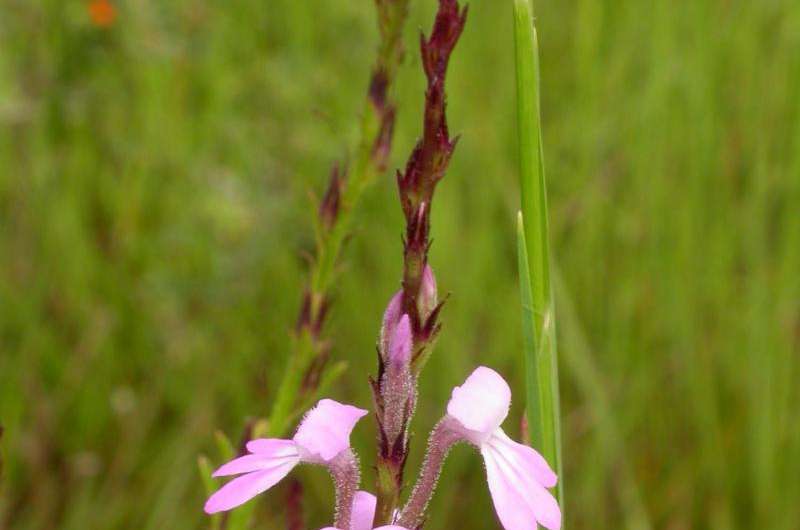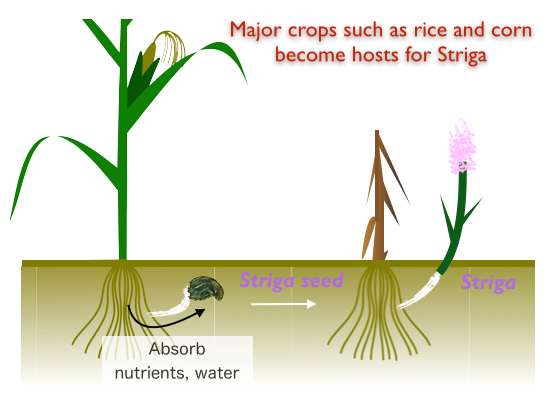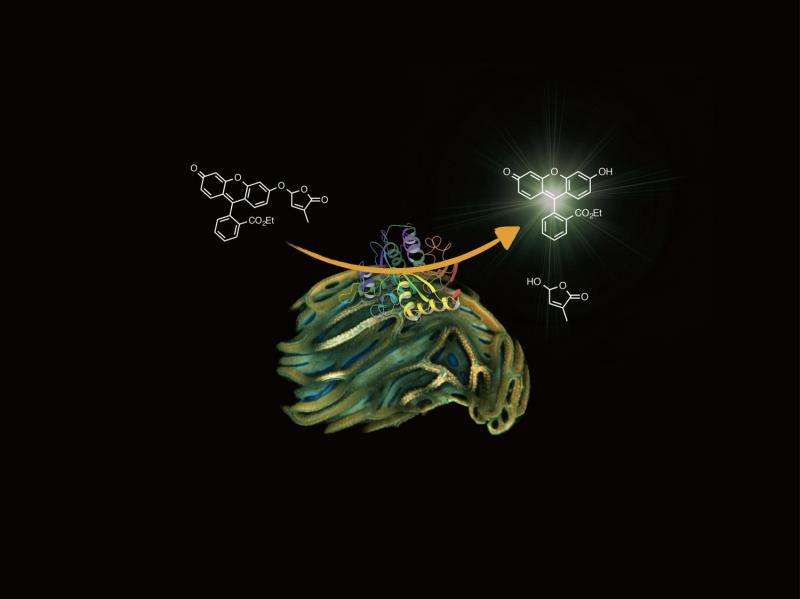Witchweed—destructive by nature

Scientists in Japan have designed a synthetic molecule that gives new insight into how a destructive weed might be detecting its host crops.
The parasitic plant Striga, also known as witchweed, poses a major threat to food security, affecting 100 million people in Africa alone and destroying crops there worth US$10 billion every year.
Despite the devastating damage it causes, the full mechanism as to how Striga even detects the presence of its host crops, such as rice and corn, has been unclear. An interdisciplinary team from Nagoya University in Japan has developed a fluorescent molecule to help.
Striga is an effective and deadly parasite despite its deceptively colourful and attractive flowers and bright-green stems. Its success is down to its effective take-over of the host plant's signalling molecules, called strigolactones, present in their root systems.
Strigolactones control plant development and promote beneficial symbiotic interactions between plants and soil microbes. However, in the presence of Striga, the host plant's strigolactones actually promote the germination of parasitic Striga seeds in the soil. The weed grows around the roots of the host plant and develops appendages that penetrate the host root cells, taking over the root system and depriving the host plant of water and nutrients.

Despite its devastating effects, scientists have been struggling to understand how Striga seeds detect the presence of host crops. "I figured that there must be a protein receptor in Striga that can detect minute amounts of strigolactones produced by the host plant," says Yuichiro Tsuchiya, a plant biologist at the Institute of Transformative Bio-Molecules (ITbM) at Nagoya University.
Tsuchiya and synthetic chemist Masahiko Yoshimura designed a strigolactone-like molecule they called Yoshimulactone Green (YLG), which fluoresces bright green upon reacting with and being decomposed by Striga. Live imaging using YLG allowed them to see how and where strigolactones bind and act upon the host plant's cells. Using YLG, they confirmed that a protein named ShHTLS in Striga functioned as the strigolactone receptor and triggered Striga seed germination.
Knowing which receptors and regulatory mechanisms are responsible for triggering Striga growth will allow researchers to come up with solutions to combat the weed. They may, for example, be able to design chemicals that halt Striga germination and thus prevent parasitism of crops.

Provided by Nagoya University




















